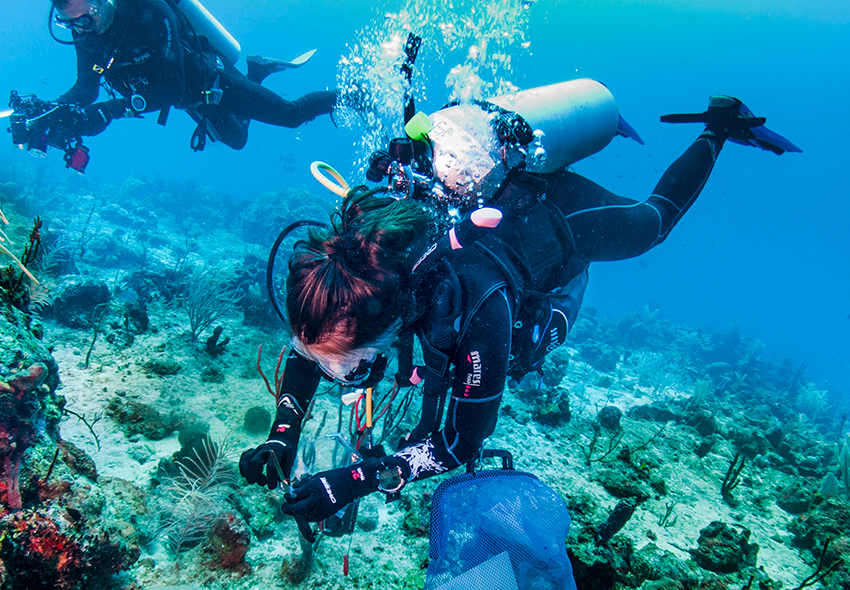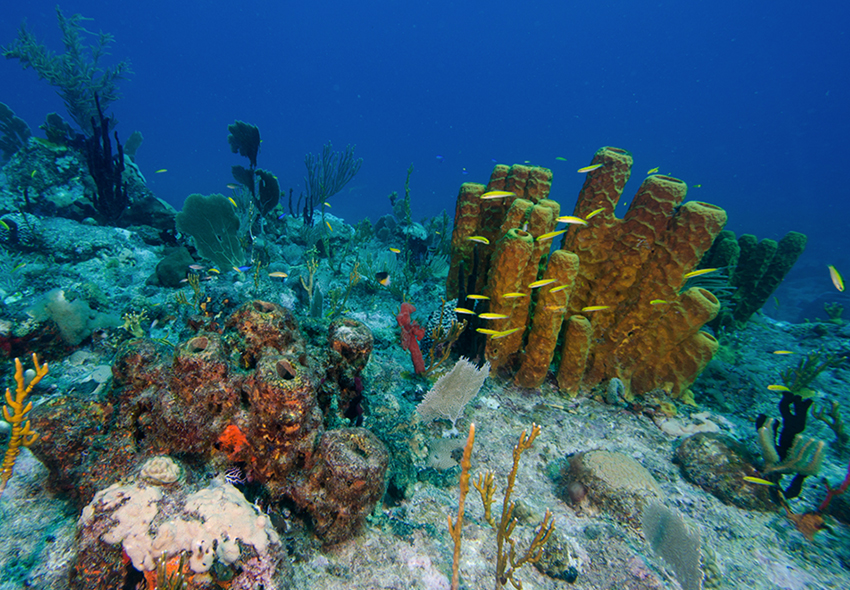A bank of sponges?
Tuesday 26 October 2015, During the Saba Bank 2015 expedition, I am studying the sponge diversity. My partner in crime is Oscar Bos, who is making brilliant pictures of the colorful species. Here I’ll give a little background to the study and in a coming blogpost I’ll fill you in on our actual day-to-day activities.
The Saba Bank houses an expansive coral reef ecosystem with a rich diversity of marine species. Not only a high diversity of corals, but also a great diversity of sponge species. Sponges are little recognized yet vital components of reef systems. They are giant vacuum cleaners, which filter out all sorts of bacteria and fungi from the water column. Sponges are able to provide food for other reef organisms by converting dissolved organic carbon into detritus. Besides food, they also offer shelter to a variety of creatures who live among the internal channels of the sponges. What is more, sponges are beautiful!
Hard surface is a valuable asset in the reef. Sponges and corals are in a constant rivalry for space. It may seem silent and peaceful down there, but all the while warfare is raging in the reefs as sponges and corals smother each other or exude their toxic chemicals to claim and maintain space. This competition is a natural state, yet in recent years there has been some concern that sponges are getting the upper hand and that the Caribbean reefs are turning into so called ‘sponge reefs’. The reason for this is that corals are becoming weaker and their cover is generally declining due to a variety of causes such as climate change, disease and local disturbances. A high abundance and diversity of sponges is not necessarily a bad thing, but a coral reef does need corals after all!
Due to its offshore location and upper-mesophotic reef system (20-50 m deep), Saba Bank coral reefs appear to have suffered relatively little anthropogenic disturbance compared to the reefs of the surrounding islands. Yet the Saba Bank reefs are still vulnerable to global stresses from climate change. With the current research we aim to see if the Saba Bank is becoming a ‘sponge reef’.
During the IMARES Saba Bank expeditions in the years 2011, 2013 and now in 2015, thirty-three 50m long transects were laid out in over the reefs and photographed. We will analyze these photographs of the benthos to see what the composition was of the community of sponge species in each year and to see how the cover and abundance of these sponges have changed through time. Identifying sponges based only on overview pictures is tough. To make certain we identify the sponges correctly, we’re setting up an identification database of sponge species, by collecting tissue and pictures of each species of sponge. When we get back home we’ll be identifying the pieces of sponge with molecular (DNA) techniques and morphological characters. In addition, we’ll compare our data with the historic collection of sponges from the Saba Bank from the 1970s that is now stored at Naturalis Biodiversity Center, Leiden.
Previous work of ours from 2013 has shown that Saba Bank is a store house of marine diversity for the nearby islands. With the current expedition we will document the sponge diversity that is thriving on the Bank./p>
EXPEDITION SABA BANK II
OCT - NOV 2015

LISA BECKING
IMARES WAGENINGEN-UR


